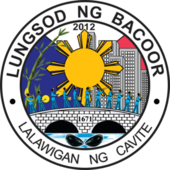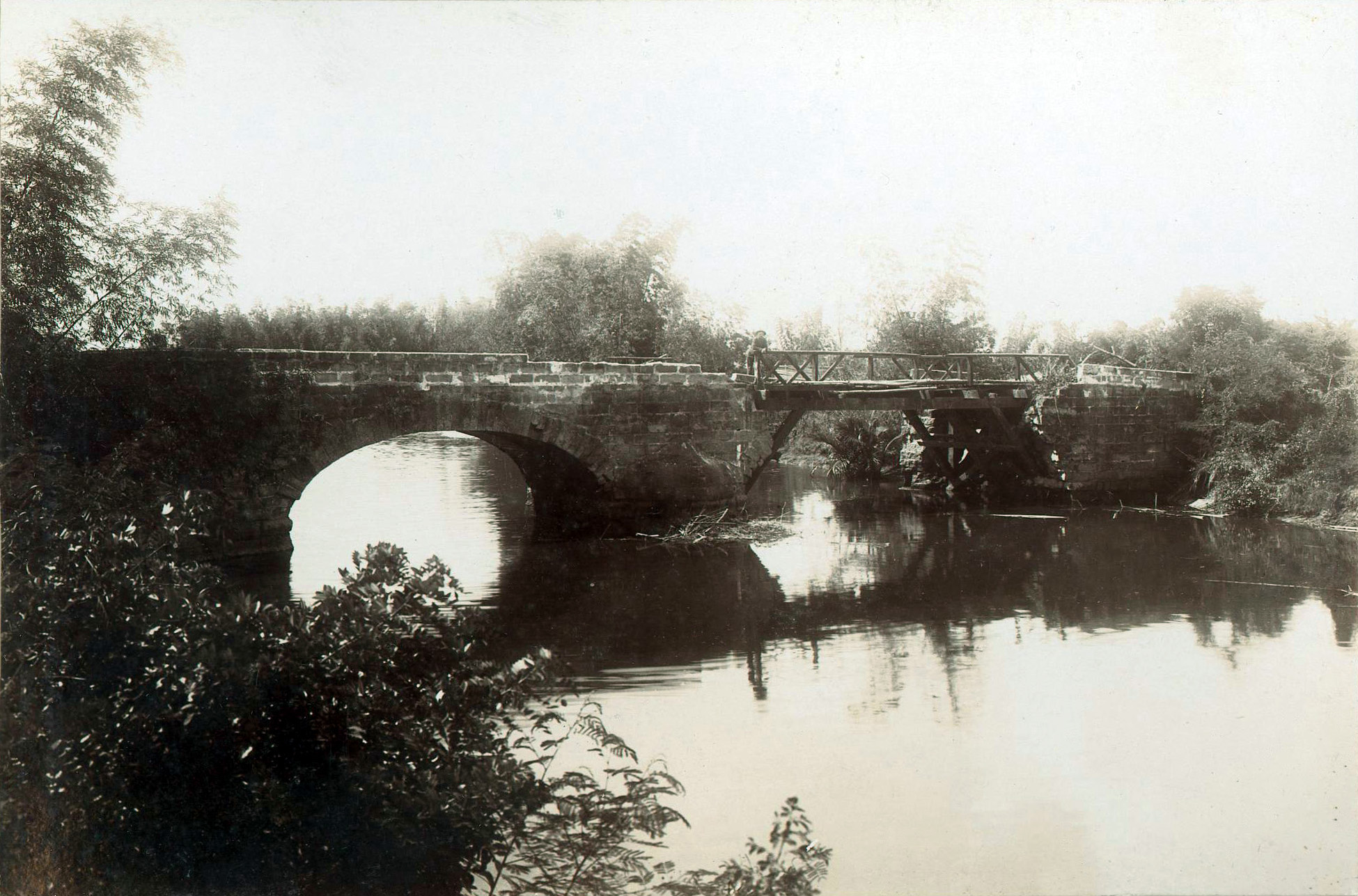Tuklas Cavite! - Municipality of Bacoor
Bacoor was
established in 1671 and is name after the Tagalog word bakod, which means "fence."
According to some sources, when Spanish troops arrived in "Bacoor,"
they encountered some locals who were constructing a fence around their
home. The Spaniards ask about the
city’s name, but due to the difficulties in communicating in each other, the
local mistook the Spaniards for asking what they were constructing. So, the
locals replied, “Bakood.” (Species of
Bamboo) However, the Spaniards pronounced it “Bacoor” by the Spanish, later on; it was officially called
“Bacoor.”
The earliest towns in Bacoor are Zapote (chico), Sineguelasan (plum
fruit), Alima (arimas), Daangbukid (passageway), Banalo (tree), Mabolo
(kamagong tree), Ligas (tree), Pinyahan (pineapple plantation), and Molino (dam
or water reservoir) with a population of 10, 165 people. The settlers like
Cuenca, Bauan, Payao, Farolan, Pagtakhan, De Ocampo, Gregorio and Guevarra.
Bacoor has become the center of several pivotal historical
events in Philippine history. Bacoor was also the ground battle for two
decisive battles that later on became well-known historical events The
“Battle(s) of Zapote Bridge” in 1897 and 1899 became the confrontation between
the revolting Filipinos against the Spaniards and Americans. The first battle
is a revolution against Spain that took on February 17, 1897. The Filipino Revolutionary Army was led by
General Edilberto Evangelista, who was a European-educated
Filipino engineer, which fought against the Spanish army and died heroically in
the battle. The second one is the Filipino-American battle in 1899. Also this
is the second confrontation of Filipino revolting Army in Zapote Bridge.
After the Philippine revolution, it is the first declaration of Philippine Independence on June 12, 1898. Also, General Emilio Aguinaldo assigned the Bacoor as the first Capital of the Philippine Revolutionary Government. After that, it was relocated in Malolos, Bulacan.
Tagalog is a member of the Austronesian language and Malayo-Polynesian
language. It is spoken as the first language of the ethnic Tagalog people.
Also, Tagalog is an official language spoken in the Philippines in the form of
Filipino. Filipino is a national language of the Philippines as one of two
official language of the country, together with English as the second majority
language spoken.
Furthermore, Tagalog language is also interdependence with Philippine
language, namely the Bikol languages, Ilocano, the Visayan languages,
Kapampangan, and Pangasinan, as well as the different Austronesian languages
like the Malay (Malaysian and Indonesian) Hawaiian, Māori, and the Malagasy are
all Formosan languages spoken in Taiwan.
Bacoor is known for oyster and mussels (talaba and tahong). You can find fresh tahong and talaba in Barangay Sineguelasan, Bacoor city, Cavite.
Halo-halo is the best dessert to beat the heat during summer. The best halo-halo can be found in Original
Digman Halo-Halo and Homemade Siopao at Digman,St. Bacoor, Cavite. You can buy it only for php 100 to php 150
for the Halo-halo and the price for other set of meals varies. The Digman
Halo-halo contains delectable ingredients like pinipig, langka, garbanzos,
leche flan, ube halaya and many more.
The City of Bacoor is also known as the Marching Band Capital of the Philippines,
under the proclamation of no. 939, the President Rodrigo Duterte honoured the
city as the “birthplace” of the Philippines’ oldest living marching bands.
Marching bands have long been a part of the city's culture and
traditions, presenting musical entertainment at events such as baptisms,
marriages, birthdays, and even funerals.
The City’s significant fiesta is the Bakood festival also known as Araw ng Bacoor. This festival is held
every September 29th. It is a yearly festival celebration honouring St.
Michael the Archangel, the patron saint of Bacoor. Also, this festival is
typically held for one-week to promote the city’s musical heritage and to boost
tourism.
Bahay na tisa also known as the first Malacanang in the Philippines
during the time of Aguinaldo. The house was owned by Juan Cuenca and Candida
Chaves that was built during 1800. Where the first President of the Philippines
Emilio Aguinaldo remained for three (3) months and makes it as the headquarters
for Revolutionary government before it they head to Malolos. Also, in this place it is claiming that the
independence movement started here; alongside with Apolinario Mabini, they plan
the constitutions.
St. Michael the Archangel Parish Church is a Bacoor Church that was built
in 1752. It is also considered as one of the province’s oldest Spanish colonial
era-churches located in Bacoor. The church was made up through the use of
bamboo, straws and nipa leaves.
Fr. Mariano Gomez was a parish priest of Bacoor church for 48 years
starting from 1824 to 1872. Fr. Mariano
Gomez, together with Fr. Jose Burgos and Fr. Jacinto Zamora was wrongly charged
with treason and sedition, and refused to participate in the mutiny in Cavite.
The three priest were executed using garrotte on February 17, 1872 in
Bagumbayan (now called Luneta).
Zapote Bridge is become important in the history, it held two decisive battles. The first one is during the Philippine revolution, the Battle of Zapote Bridge in 1897 within the Filipino revolutionaries and the Spanish army. The second one is during the Filipino-American battle, the Battle of Zapote River in 1899 within the Filipino and American Army. Due to the two decisive battles happen in Zapote Bridge, the National Historical commission of the Philippines appointed the bridge as the National Historical Landmark on September 9, 2013.
Digman Halo-halo is a local business located at Bacoor, it was owned by Raymunda Ugalde-Toledo. She started
selling it during the Japanese occupation in the Second World War. But today
the store was managed by her grandchildren: Donita and “kuya” Boy as well as
his wife, Minda.
The Digman Halo-Halo was contains different delectable ingredients:
Sugar, tapioca, white beans, Philippine banana (saging na saba), Sweet garbanzo and red munggo beans, “kaong” (sweet
palm fruit), macapuno, shaved ice, evaporated milk, ube (purple
yam),and leche flan.
Kainan sa balsa the first and only floating restaurant in Cavite, you can enjoy dining afloat. It was begun on September 9, 1995 where with six (6) bamboo rafts or balsa only. It was owned by an Engr. Guinto, together with his wife, they want to build something like exotic dining restaurant with the touch of traditional designed for family and friends gathering. Kainan sa balsa is a small hut floating in the center of fishpond that was also owned by the Guinto clan. Furthermore, they serve native Filipino foods, some of their best-selling foods are grilled sea foods like inihaw na pusit, inihaw na tuna, inihaw na tilapia, and many more.











Comments
Post a Comment